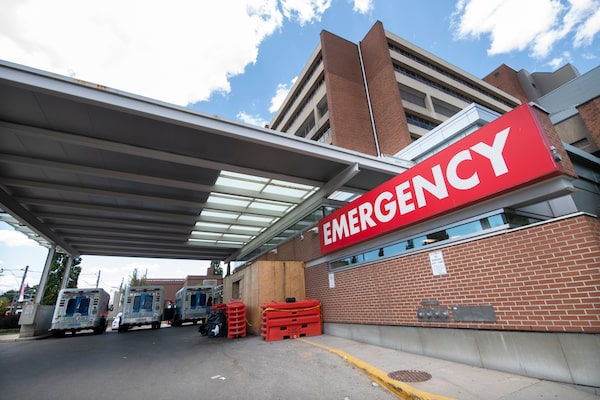
Ambulances parked by the emergency department at Toronto Western Hospital on July 14.Fred Lum/The Globe and Mail
It’s hard to say anything good about the COVID-19 pandemic, but at least there was this: What landed in early 2020 was such an urgent threat to the health, wealth and life of Canadians that all levels of government had no choice but to give it their full attention. They had no choice but to treat it as an existential crisis, and Job No. 1.
That’s what it’s going to take to fix all that’s broken in Canadian health care. The crisis happened slowly, and then all at once. It can no longer be wished away – though governments have spent decades trying to do that. It can’t be relativized away – medicare is better than the gargantuan costs and glaring inequities of American health care, but that’s a low bar. And it can’t be fixed by the same old solution: throwing money at an unreformed status quo.
The first step in tackling any problem involves measuring it. You can’t fight what you can’t see. Consider the response to COVID-19. Not long after it hit, provinces started compiling and releasing data, often on a daily basis, tracking infections, hospitalizations and deaths. When the first of the long-awaited vaccines began to arrive in late 2020, health officials delivered a daily data dump on how many (and initially how few) vaccines were on hand, and how many (or few) Canadians were being vaccinated.
It gave a precise picture of where things were, and where we were failing – including which communities were suffering the highest incidence of COVID, or the lowest vaccine uptake, and where extra outreach was needed.
This ceaseless flow of data powered an engine of accountability. The information begged a response, leaving governments with no choice but to take action. Beating COVID became, press conference after press conference, political issue No. 1.
The result? Canada did better against COVID than almost any other developed nation. Our death toll – half as high as France, one third the U.S. – is lower than nearly all of our peers countries; our first- and second-shot vaccination rate is among the world’s highest. Canada became a leader in reducing severe illnesses and death from COVID.
We can do the same with health care.
The response has to start, as the COVID response did, with data. Right now, Canadian health care is an information black hole – partly for governments, entirely for patients.
Consider this contrast: If you load up the app for Bike Share Toronto, you can instantly see exactly how many of the system’s nearly 7,000 bikes are currently available to rent, and where they are. Ditto the millions of books in the Toronto Public Library. But if you’re waiting for a surgical procedure, or an appointment with a specialist, do you know how long the queue is? Or where you are in the line? Or how many lines there are? Is anyone even keeping track of the queues?
Governments know how much they’re spending on health; in Ontario this year, for example, it’s $73-billion, or 40 per cent of all program spending. (And Ontario is the lowest per-capita health spender among the provinces.) Yet they have a remarkably poor sense of what that money is buying.
What’s needed, for a start, is the kind of dashboard that was released every day during COVID. How many people in your province don’t have a regular family health provider – and how has that changed in the past week? What’s the wait time at each emergency room in the province? What’s the wait time for various surgeries?
This kind of data, and much more, needs to be compiled weekly and released prominently, by each province. And then premiers and ministers and the PM have to hold regular health crisis press conferences, just like they held regular COVID-response press conferences.
If they find themselves telling the public, week after week, that 15 per cent of Albertans, 18 per cent of British Columbians and 9 per cent of Ontarians are still without a regular health care provider, or that the wait for knee replacement surgery is still 30 months, it will go very badly for them. Their political futures will depend on fixing this.
Reforming medicare will call for innovating, including harnessing the power of private initiative to deliver publicly funded services. It will not mean ending universal health insurance.
In the coming weeks, we’ll have a lot more to say about this. But change has to start with governments lighting a fire under themselves. Right now, the only thing burning is medicare.
Keep your Opinions sharp and informed. Get the Opinion newsletter. Sign up today.